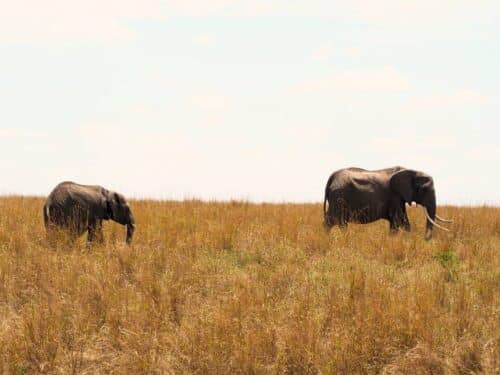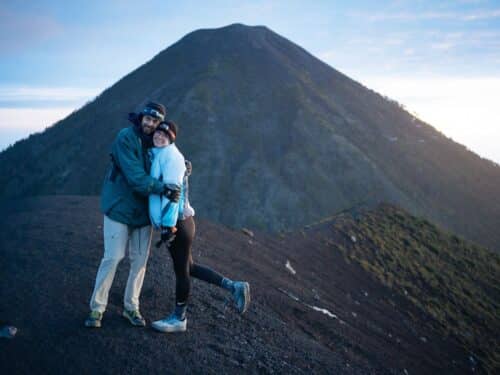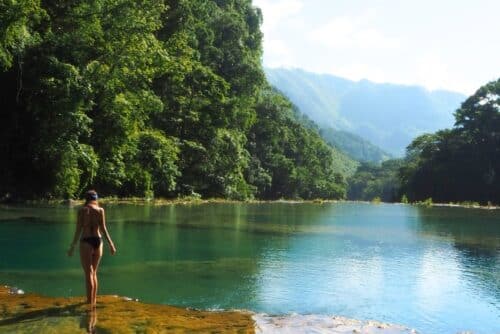Are you considering going to Kenya as a digital nomad? After spending almost four months, we highly recommend it! But what are the visa requirements, where to stay, what to do, and what to expect? Well, it’s going to be a different experience for everybody, but we’ll share our own!
Are you looking for specific information? Go ahead:
ToggleWhy Is Kenya Worth a Visit?
Kenya has it all: breathtaking beaches, stunning nature, amazing restaurants, friendly people, and enough to do for months. Most of the time, the prices are also very reasonable – do not expect Southeast Asia prices, but you still get good service for what you pay. Except for activities like safari, guided hikes, or other tourist-centric experiences – more about that later.
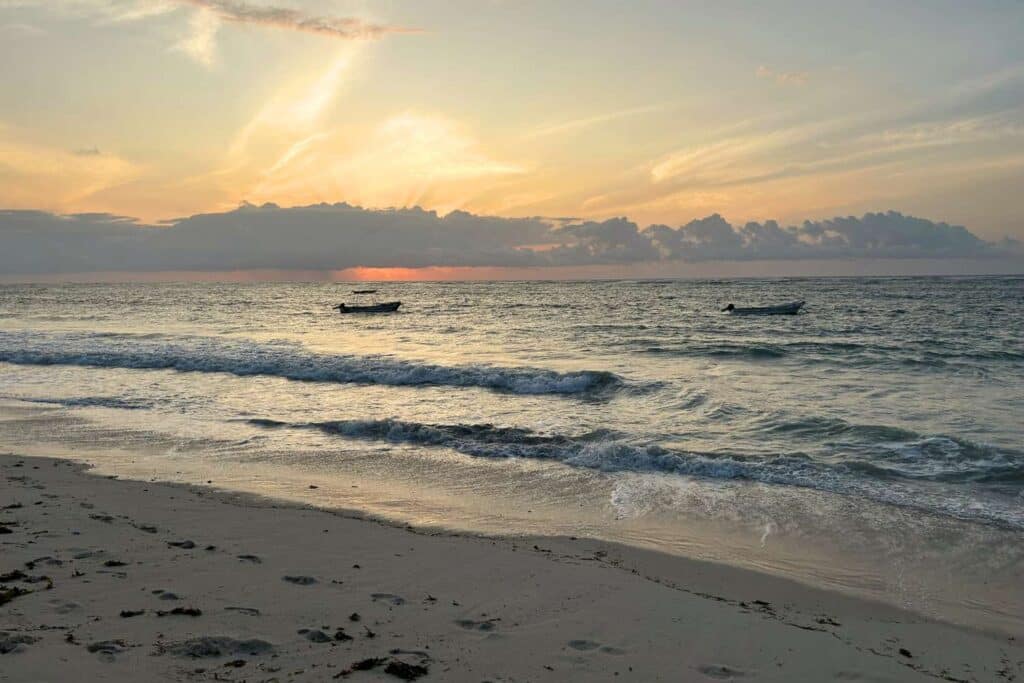
Visas and Entry Requirements
When we visited Kenya in 2023, we still needed a visa. There were two options – applying for a single-entry 90-day visa for Kenya only, costing $50, or applying for the East African Tourist visa, for $101, also valid for 90 days but allowing you to travel freely between Kenya, Uganda, and Rwanda. But things changed in 2024.
Kenya Is a Visa Free Country Since 2024
Kenya is officially a visa-free country since January 2024, but… But be careful, that doesn’t automatically mean you can just come to the country without prior paperwork. That would be too easy and make too much sense.
Unless the exemption applies to you, At least 72 hours before travel, you must complete an Electronic Travel Authorisation (eTA) and pay a $35 fee (as of June 2024). In this time frame, you should get your eTA, valid for 90 days. That doesn’t mean you have a visa for 90 days since your eTA was issued, rather, it allows you to arrive in the country within those 90 days. The duration of your stay is determined by the immigration officer at the airport/land border.
You can apply for your eTA here.
Entry Requirements
The entry requirements for Kenya to obtain the eTA are basically the same as they were to get the classic visa:
- Valid passport
- Recent passport picture or selfie taken during the application process
- Contact details (home address, telephone, email)
- Travel information and flight itinerary (arrival flight number, date of departure of initial flight in case of connecting flights)
- Proof of booking for the hotel you will be staying at (if staying with friends, a letter of invitation is accepted)
- Yellow fever vaccination certificate if coming from endemic countries
Important Information
Submitting the eTA application doesn’t mean you get your 90 days (or whatever you need) in Kenya. It only means you are eligible to travel to Kenya (i.e. there is no problem with your passport, bookings, or travel information) but the immigration officer will determine admissibility upon arrival. So make sure you have all the paperwork ready for the airport and, as always, never mention you’re coming to work online as a digital nomad.
Also, if you forget to fill in the eTA in time, I mean those 72 hours before traveling, there is still a chance you’ll get it. I did some research and according to people in Facebook travel groups, it is sometimes processed within hours. But the system is down from time to time and it can also take longer than those three days, therefore it’s recommended to apply for eTA two weeks before travel – and you can apply up to three months prior.
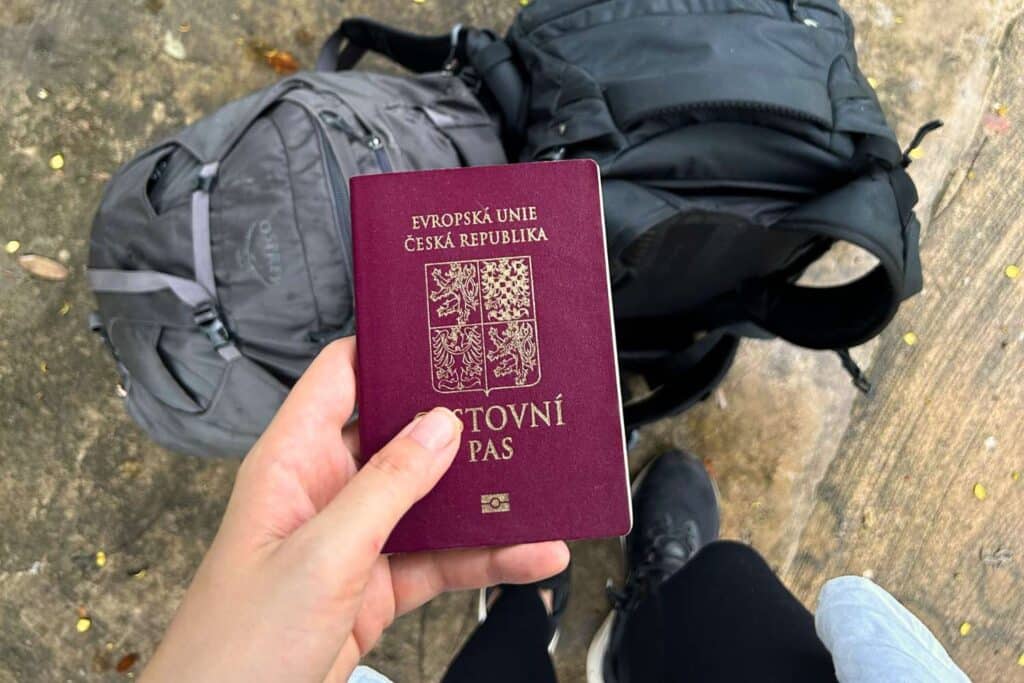
Vaccinations etc.
When it comes to traveling and vaccination, it’s always best to pay a visit to your doctor or a travel medicine center and ask for advice. Which is what we did before this trip back in Czechia as well. Anywho, this is our experience.
Required Vaccination in Kenya
The Yellow Fever vaccine is the only required vaccination – and even that is only necessary if coming from endemic countries. Even though we came from Europe, we knew we’d travel around East Africa and it’s often required to cross the border (we were asked for it at every border crossing in East Africa).
Recommended Vaccination in Kenya
There are some other recommended vaccinations to consider when you go to Kenya. Since we traveled around Latin America a lot before, we already had some and got some extra. These were recommended to us:
- Typhoid
- Hepatitis A & B
- Cholera
- Rabies
Another thing not to forget about is malaria prevention. Since there is no vaccination yet and we’re not that keen on taking antimalarials for a year or even more, we keep up with some basic precautions instead. Such as using repellent when necessary, staying in a place with mosquito nets, etc.
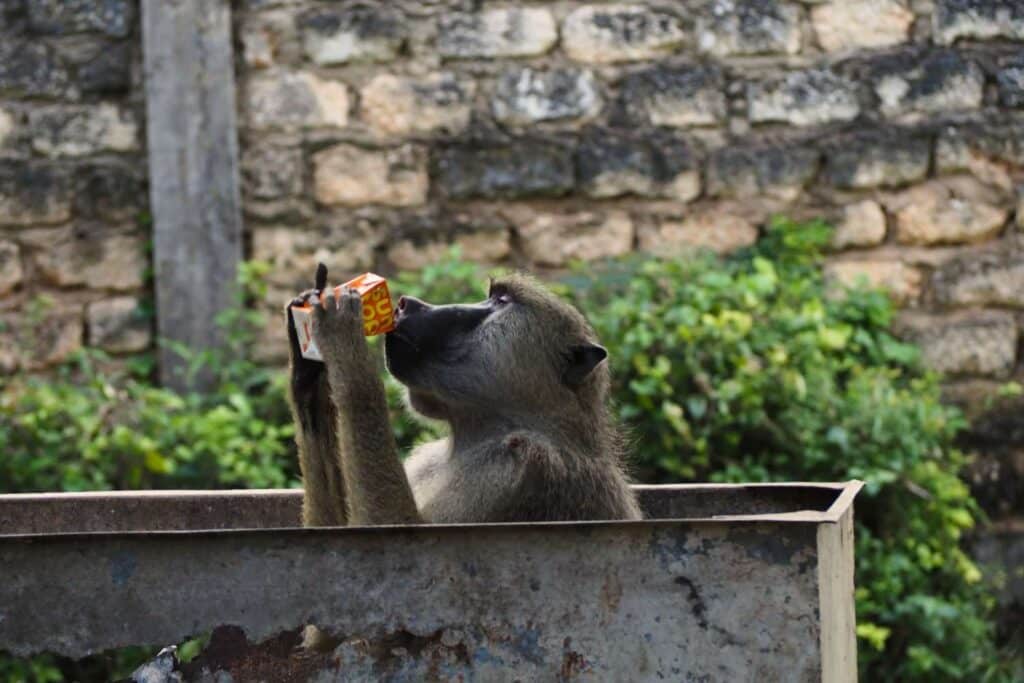
Where To Stay in Kenya as a Digital Nomad?
There are basically two digital nomad hubs: the coast and Nairobi. We tried them both and we loved them both. Each offers a different experience, which means Kenya can accommodate all kinds of people – or people like us, who are interested in too many things.
- Nairobi is the capital city of Kenya, with many amazing restaurants, city life, but also amazing proximity to the national parks.
- Mombasa, with its big port and long history, is the capital of the coast of Kenya – it’s interesting for a day trip but didn’t seem that appealing for a longer stay (in my opinion).
- Diani Beach, about 30 km south of Mombasa, is the main hotspot on the Kenyan coast with wide long beaches, crystal clear water, friendly people, good internet, and enough cafés to work from.
- Kilifi, about 60 km north of Mombasa, is a very laid-back beach town, and our favorite part of Kenya – the reliability of the internet and amount of restaurants might not be as good as in Nairobi or Diani. Still, the down-to-earth vibe and kindness of people make up for it a billion times.
- Watamu, another 50 km farther north, is a town on the coast, with beautiful beaches, corrals, lots of marine life, and a strong Italian community, but insufficient internet. It’s great for a day trip or weekend getaway though! If you come, make sure to stop by for a Neapolitan pizza at Sunset LAB and for sundowners at Lichthaus bar.
- Lamu Island is about 150 km from the northern borders of Kenya with Somalia and it’s not recommended to go any farther than there. Even though the island is supposed to be really beautiful, being a UNESCO World Heritage site with a unique blend of Swahili, Arabic, Persian, and Indian influences in its architecture and culture, we didn’t go because land travel is not that safe in the area and busses/vans face armed robberies way too often to our taste.
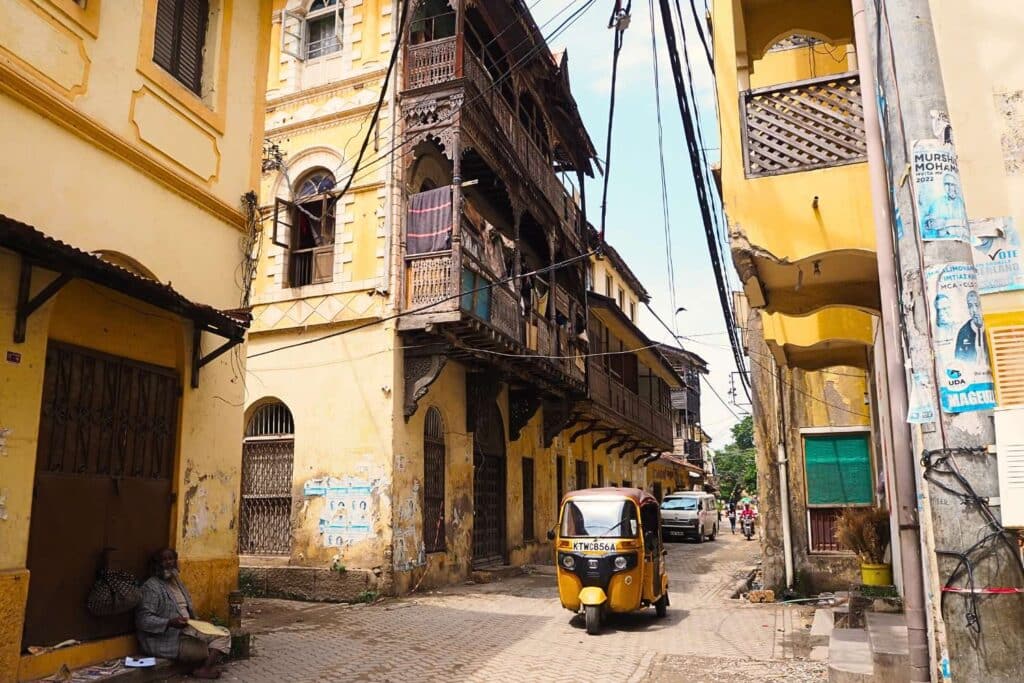

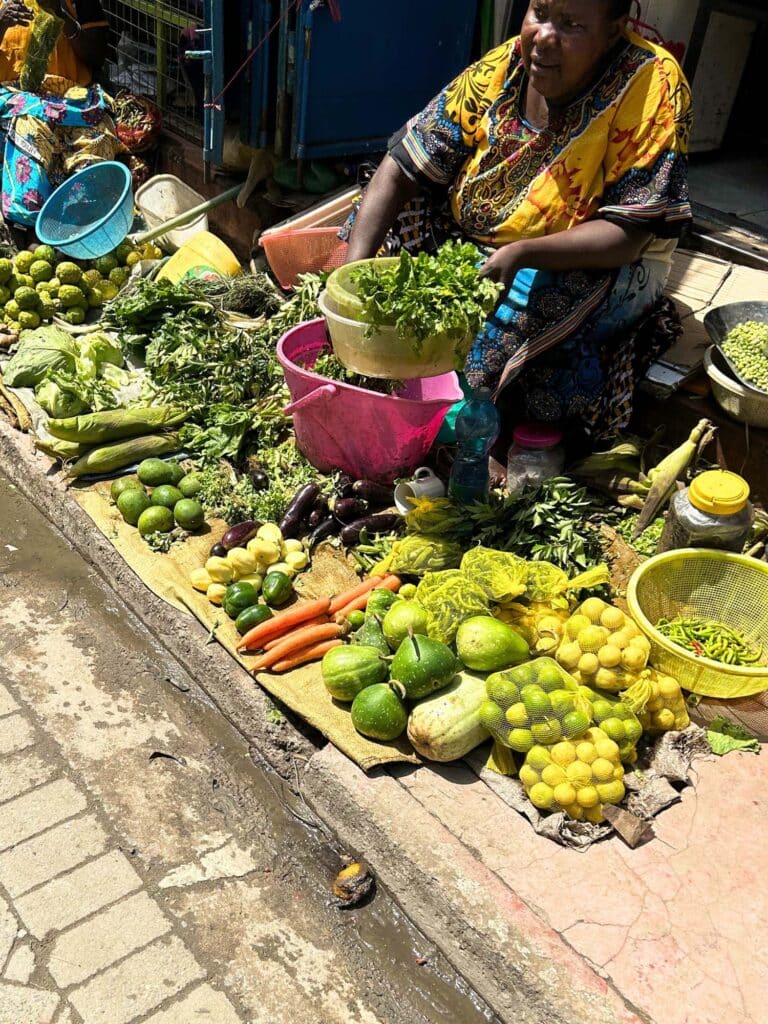
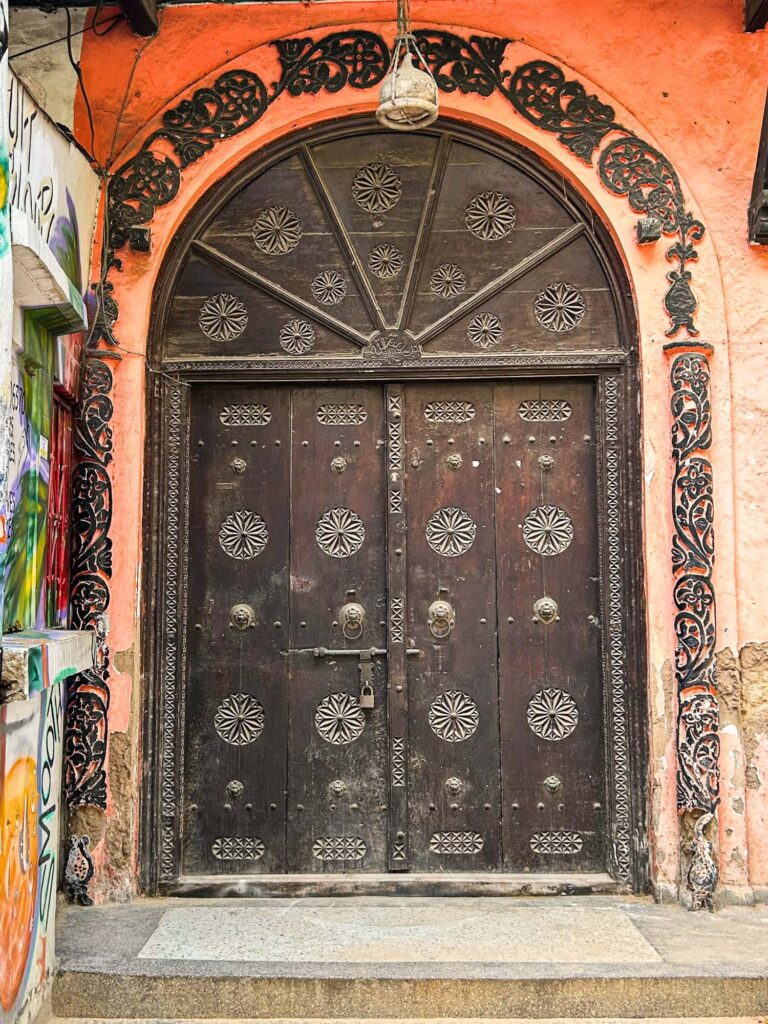
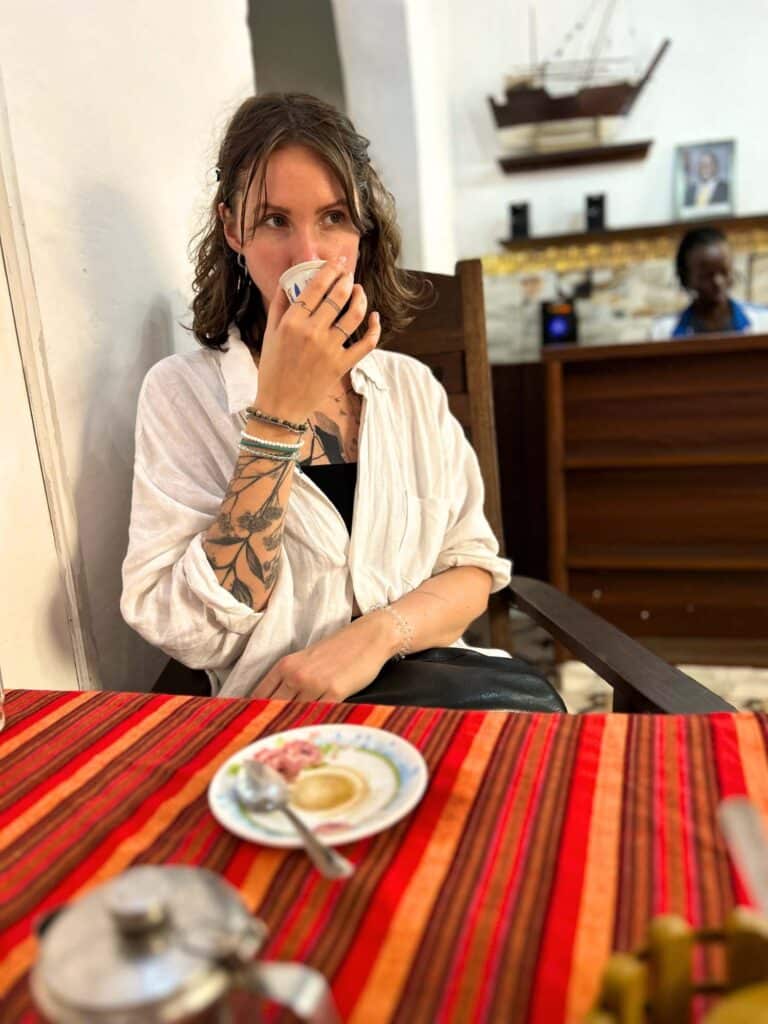
Safety in Kenya
Even though we felt very safe in the areas of Kenya we visited, it’s good to remember it’s far from the safest country in the world. Kenyans are super friendly people (the friendliest we encountered in East Africa) but petty theft and violent crime are still serious issues in the country.
I’m not here to scare you, but pickpocketing and robberies, mugging, or armed roadblocks indeed happen. While traveling around the country on public transport, we didn’t have a single issue and my biggest advice is to be street-wise. What does that mean?
- Never walk on the streets after sunset. Just spend those few bucks and call an Uber if you go out in the evening.
- Be aware of your surroundings and listen to your gut feel. If something feels off, just leave.
- Ask locals for tips and info about safety in the area. If you go for a trip or just want to know how (un)safe it is to walk around, the Uber or boda boda drivers, hostel staff, Airbnb owners, etc. will give you the best advice.
- Don’t flash your valuables, especially in big cities like Nairobi or Mombasa. Check the map ahead, answer the messages when you sit in a café, don’t listen to loud music with huge headphones, etc. And if you need to check something, hold on to your phone so no one can snatch it while riding a motorbike next to you.
- Stick with more people if possible. It’s easier for us since we travel as a couple. But you can always team up with new friends from the hostel etc.
- Just give all your valuables if armed robbery happens. Your iPhone is not worth your life.
Tip: For more info, check out the travel safe rate for Kenya.
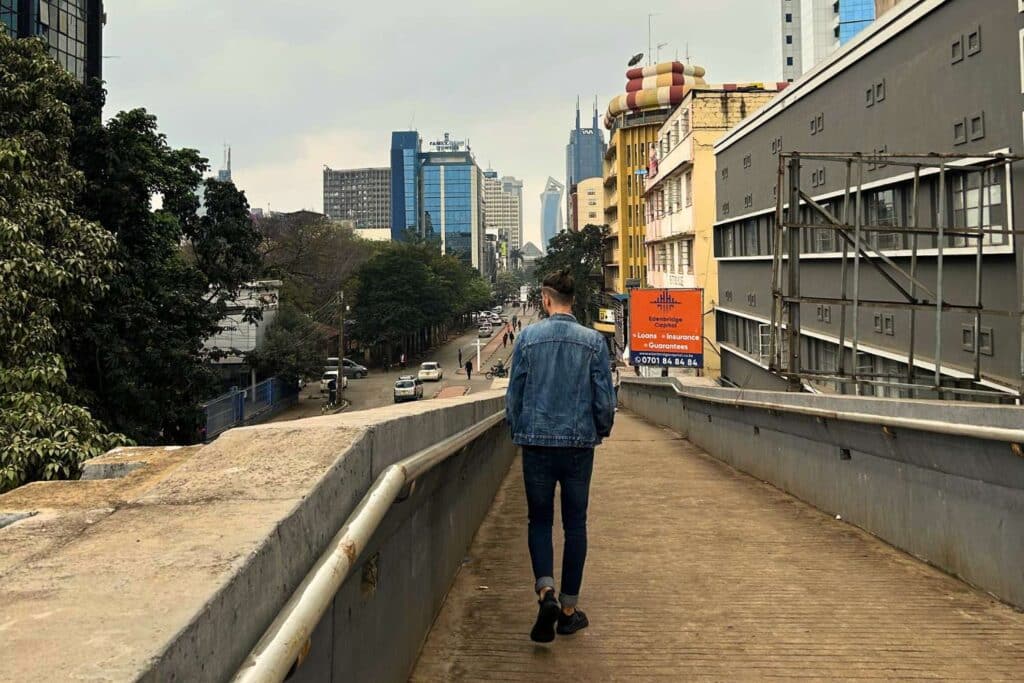
Language and Etiquette
Kenya has two official languages: English and Swahili. English is widely spoken, but it can happen, for example at local markets, that people don’t know it. No worries, they will always try their best with body language or call a friend from the next stall. It’s always appreciated if you know some basic phrases, at least hello (jambo) and thank you (asante).
Most of Kenyans are Christians (about 85 %), and the second largest religion is Islam. There is a huge difference on the coast though. The numbers are roughly 60:40 there, and if you go to downtown Mombasa, there are over 90 % of Muslims.
Since people are quite religious, it’s advised to dress modestly. It’s pretty relaxed around the beach. But even there I would usually take a long-sleeved shirt over if I’d wear a more exposing outfit and figured the norm from what local girls would wear.
What To Do in Kenya
Kenya really has so much to offer – although it depends on your budget quite a bit. You might be surprised that Kenya is not as cheap when it comes to fun stuff like safari trips, scuba, or kite surfing (more about prices below).
The second important thing to consider is obviously the location – in Nairobi, you can enjoy the culture, restaurants, and trips to some of the best Safari parks. There are some great safari options on the coast too, but it’s mostly about beach time, kite surfing, scuba diving, etc.
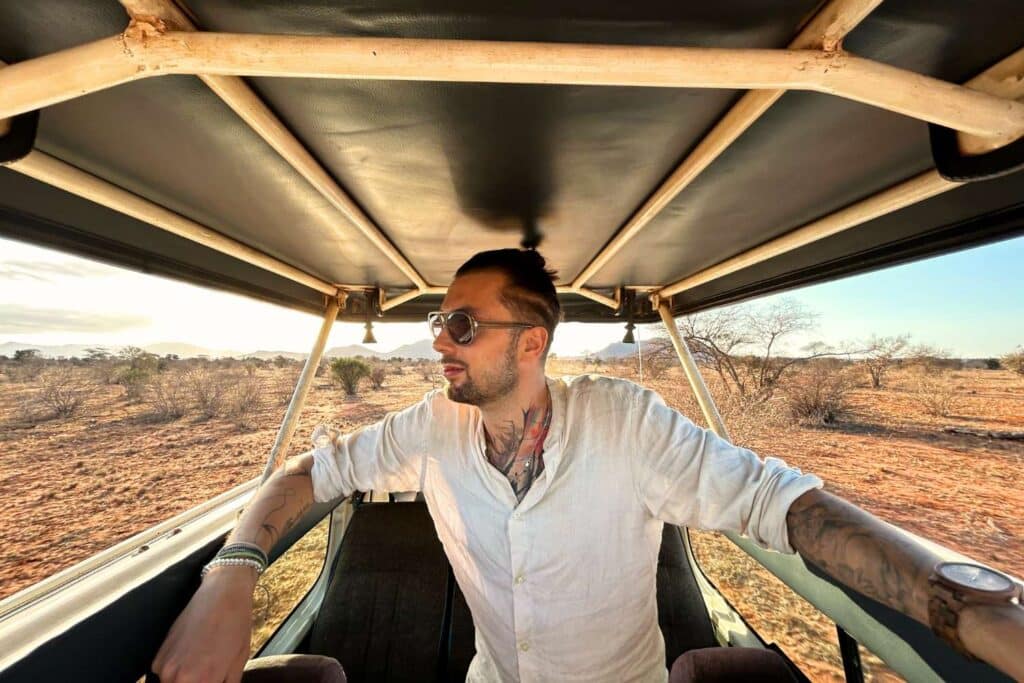
Reliability of Internet Access
The reliability of the internet is quite dependable on your location. Many hostels, restaurants, and Airbnbs offer good enough WiFi for working, and 4G (somewhere even 5G) works great even in many rural areas.
We never had problems in Nairobi, Diani was also good, but Kilifi was a bit challenging. When booking Airbnb, we recommend checking the reviews and asking your host to provide a screenshot of a speed check. And hope for the best.
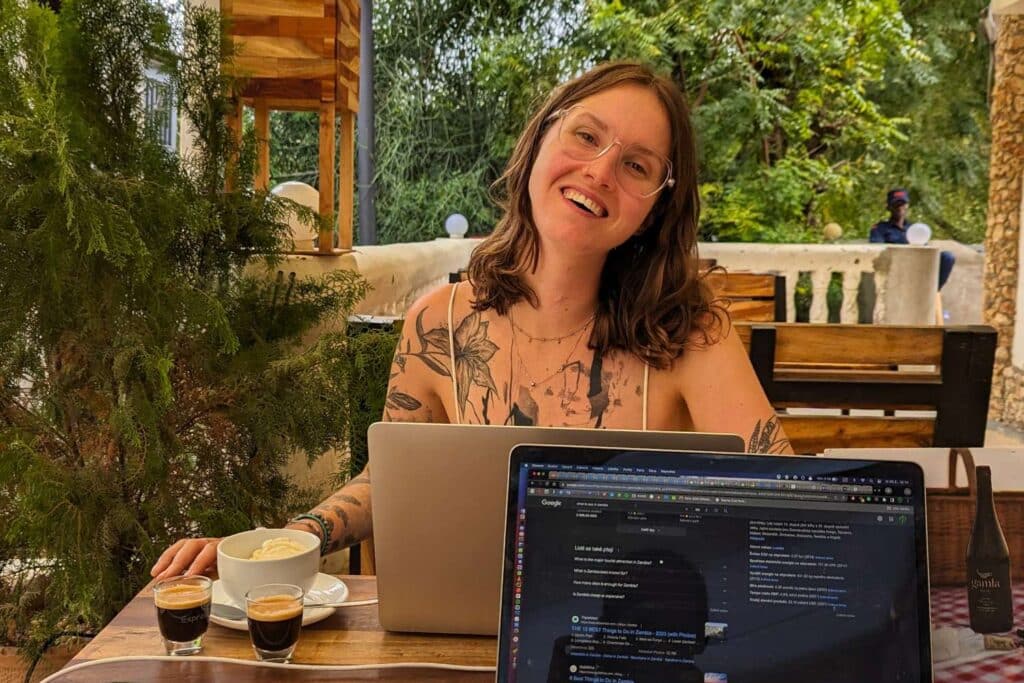
SIM Card and Data Cost in Kenya
As I mentioned earlier, the 4G+ coverage is great in Kenya. We even had some reception during our safari trips in the middle of the park or on the boat while diving. The two main providers are Safaricom and Airtel.
Safaricom (which we opted for and were happy with) should have the best coverage and great data speed. It’s also convenient since you can set up M-PESA (mobile money wallet which is very handy all around Kenya) while getting your sim card.
Airtel should have pretty good coverage and reasonable speed too, and the prices are slightly lower than Safaricom. We didn’t try it ourselves though.
Prices in Kenya
Kenya is not an expensive country… Until you want to do something touristy. So shopping for local groceries is not expensive. You can even find many great organic and vegan products for a very reasonable price. The same goes for cafés and restaurants – unless you’re unlucky, the restaurants tend to offer great value for money.
But once you decide to go for a safari trip, diving or snorkeling, take a kite surfing lesson, etc., prices go up. Very often to the level of Western Europe kind of prices. Trying to find ways around and doing things low(er) budget is possible in some cases, but since Kenya is not the most backpacker-friendly country, it’s not as easy as it should be.
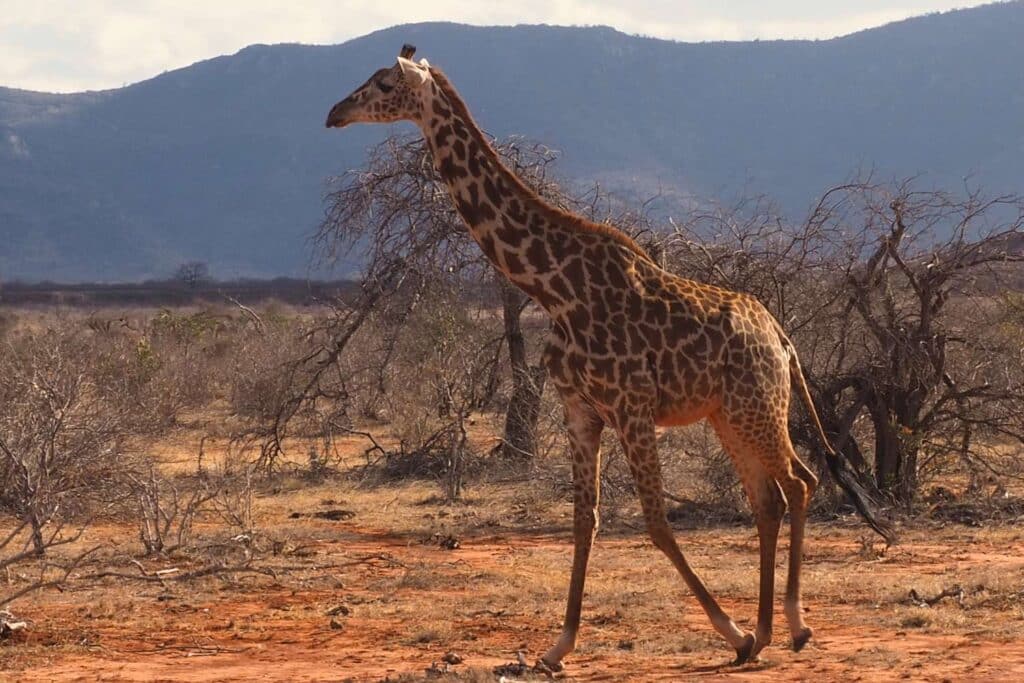
Money in Kenya
- The local currency in Kenya is the Kenyan Shilling (KES) with an approximate exchange rate of 100 KES = €0.7
- I&M and DTB Bank ATMs provide free money withdrawal
- Card acceptance is quite wide, especially in cities/tourist places, but it’s good to have some small cash and set up an M-PESA account as well
- Tour agencies and even some restaurants accept US dollars and euros. I would recommend using the local currency – it’s usually more economical and IMHO polite. But if you, for any reason, don’t want to withdraw/exchange the money for everything, at least give the tips in Shillings. It’s a pain for the locals to exchange the money.
What is M-PESA?
M-PESA mobile money is basically an easy banking account or a digital wallet connected to your SIM card. It was invented in Kenya in 2007 to help people without a bank account to access financial services, and it spread to all the neighboring countries since.
With M-PESA, you can pay for everything! For tours, transport, in bars and restaurants, for online purchases, booking buses, and even in supermarkets like Carrefour, on the local market, or in a matatu.
You need to have a SIM card from Safaricom and set up the account at their branch (don’t forget your passport). Once it’s set up, you only need to add cash to a virtual wallet (which can be done at the Safaricom branch as well as at pretty much any little store – always only in cash though), and you are ready to send and receive money.
Tip: Since January 2024, it’s also possible to send money to M-PESA from your Revolut account!
Transportation in Kenya
If you want to use public transport in Kenya, you have three options:
- Minivans called matatu
- Long distance buses
- Long distance trains
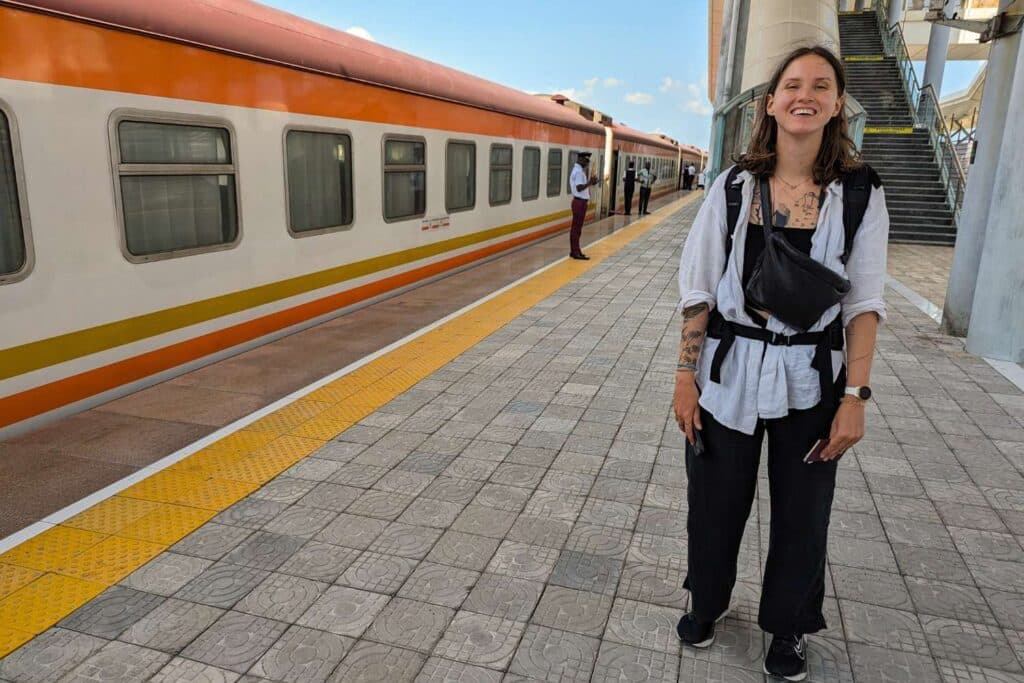
Matatu
The most common means of travel in Kenya is a matatu – the typical 14-seater van, which is very often filled with 20 or more people and their belongings. It takes you from point A to point B, and you can usually get on/off at any point. It’s the same thing as colectivo in Central and South America, taxi in Uganda, or dala-dala in Tanzania.
There is usually a set price for the journey or a part of it, but be aware that asking tourists for more money is pretty common. Therefore it’s good to always do some research and check the prices ahead. On some routes, the prices are clearly stated though – that mostly happens with long(er) distance matatus.
We even took some routes where it was possible to choose from different classes of matatu – you pay a bit less and they squeeze in 18 people, or you pay a bit extra and there are only 14 people in the van. First-class matatus are life.
Long Distance Buses in Kenya
Traveling by bus in Kenya is not as straightforward as in other parts of the world. Not that many companies have their website, and even if they do, booking a ticket might not go as smoothly as we like it. Often you need to find a Facebook page with an up-to-date schedule or ask via WhatsApp. That actually works best.
The buses are not in their best shape anymore, but they work just fine. We took a bus from Kenya to Uganda and back, and also to Tanzania. And it didn’t break along the road. The main bus companies in Kenya are Mash Poa, Modern Coast, Tahmeed Coach, and Simba Coach.
Trains in Kenya
And finally, the best way to travel around Kenya: the train! Ok, there are not so many of them, and they only go once or twice a week, but they are nice. You can take a train from Nairobi to Mombasa and back, from Nairobi to Kisumu, and from Nairobi to Nanyuki.
We traveled by the Madaraka Express train between Mombasa and Nairobi twice, and the quality was great. You can buy the tickets online with M-PESA, and there is a very comfortable (and reasonably priced) first class. You can even get food and drinks (vegetarian options and beer included) on board. We used the time on the train to work (4G reception was not great, so it’s good to plan some mostly offline work) while trying to spot some animals while going through the Tsavo East Park. Not a bad way to travel!
And that’s about it! If you have any other questions about traveling or digital nomading around Kenya, feel free to ask in the comment section or via Instagram. If we know the answer, we’d love to help!
Love,
Lea
